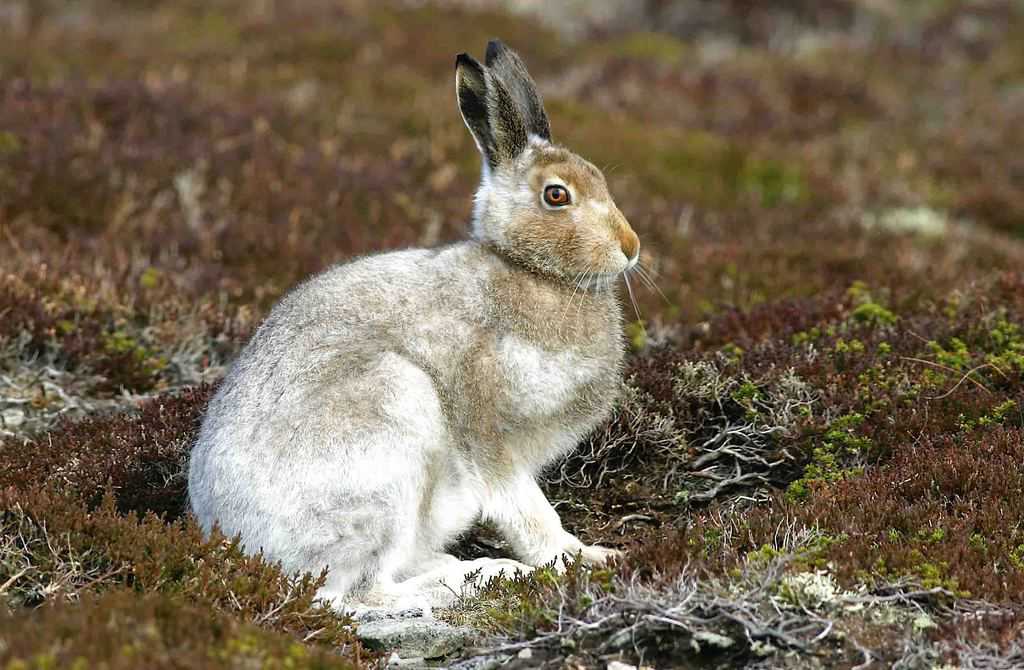Gamekeepers plan to speak to the group behind the Langholm community buy-out to discuss a scheme to return the iconic mountain hare to its former moorland home.
The Langholm Initiative completed south Scotland’s biggest ever community buy-out when it purchased 5200 acres of Langholm Moor, Tarras Valley and associated properties from Buccleuch Estates for £3.8m last October.
Legal paperwork was due for completion on January 31st, with the group seeking to create Tarras Valley Nature Reserve, which they hope will become a haven for nature.
Now gamekeepers in neighbouring upland areas hope to set up a meeting with the group to discuss the possibility of hares being reintroduced to the moor to kick-start a regional recovery.
The mountain or ‘blue’ hare is Scotland’s only native hare and was a common sight at Langholm when the moor was managed for red grouse shooting.
Now fully protected, the native hares became extinct at the site around the early 2000s after gamekeepers had lost their jobs following the Joint Raptor Study (1), undertaken at Langholm.
Despite mountain hares’ conservation status now being classed as ‘unfavourable’, driven grouse moors in nearby Lammermuir and Moorfoot hills boast a healthy surplus.
Their plan is to discuss the potential for them to act as ‘donors’ to help re-boot the species where they were once a cherished part of the moorland fauna.
Hares would be ‘live trapped’ on grouse moors to be translocated to moorlands with appropriate habitat, in a bid to re-develop a breeding population.
Similar translocations, which follow a conservation Code, have allowed beavers to be captured and moved from parts of Scotland where they cause significant damage to farmland.
This has allowed other regions to benefit, also reducing numbers of problem animals potentially culled under licence.
“Mountain hares were common when gamekeepers worked at Langholm. There is potential for a win-win, here, for returning lost species, for Reserve visitors to enjoy and for getting hares back to favourable conservation status in Scotland,” said Alex Hogg, Chairman of The Scottish Gamekeepers Association.
“There is a willingness for gamekeepers to discuss this with the community group and we hope a virtual meeting can take place after they get their feet under the desk.
“If all the tests can be met, we could see mountain hares back at Langholm. That would be a special achievement. If they were to re-establish successfully, it could also have a longer term benefit as a food source for the golden eagles which have been reintroduced to the south of Scotland.”
While gamekeepers have been criticised for culling mountain hares, research shows grouse moors can house populations up to 35 times more abundant than non-managed moorland due to predator management and legal burning of heather which renews their food supply .
When hares reach high densities on grouse moors, however, they become highly susceptible to disease caused by gut worms which can see them die off in large numbers as it spreads.
“Now that the new laws to protect mountain hares are passed, there is no longer an ability to control hare populations on our moors,” said Mark Ewart, Co-Ordinator of The Southern Uplands Moorland Group.
“It makes sense to use surplus populations from grouse moors to try to re-establish the species elsewhere, or to build up fragmented populations so they become more resilient.
“Research points to there being not enough recruitment, in areas away from grouse moors, to sustain the species in the longer run. Rather than watch them die on our moors from disease, which is pointless, it makes sense to use the surplus to help the species recover.”





